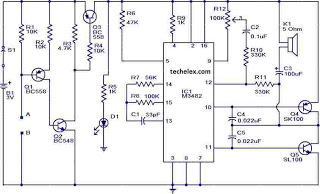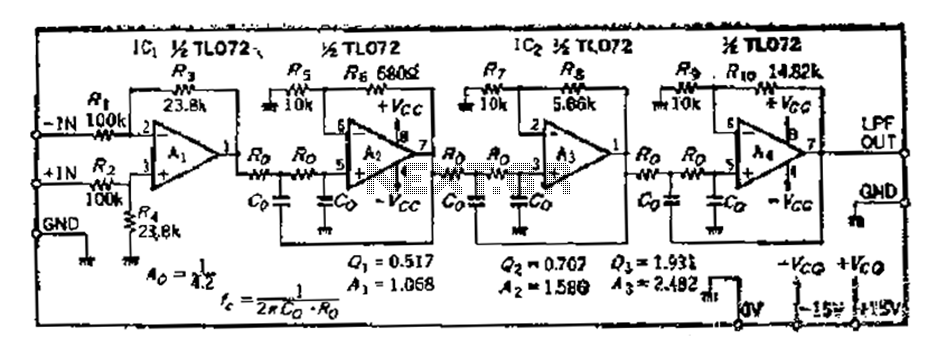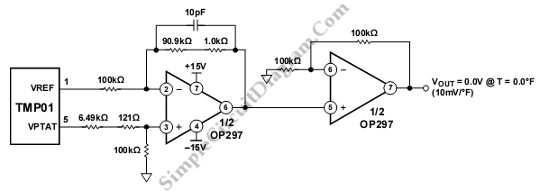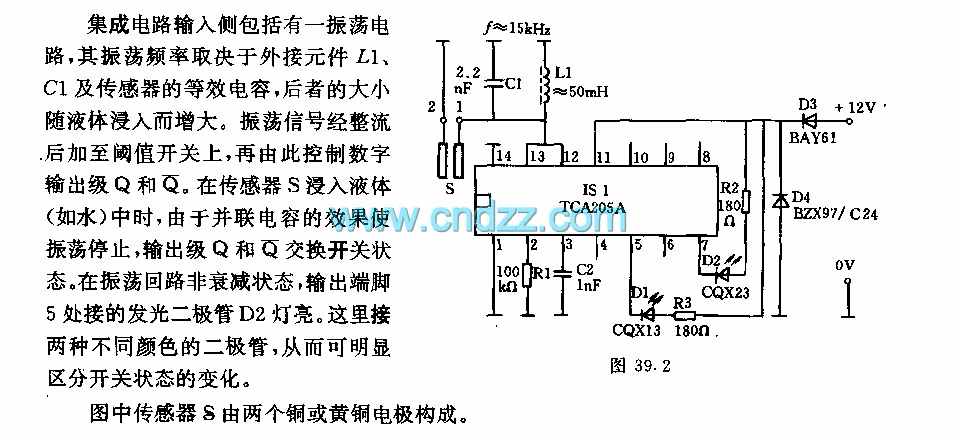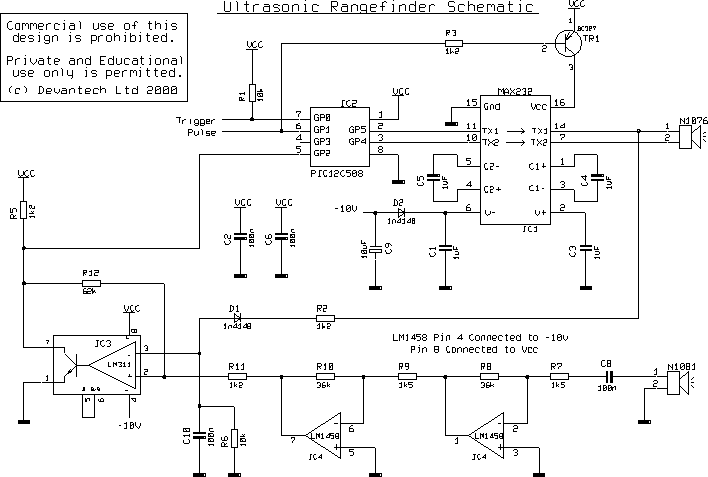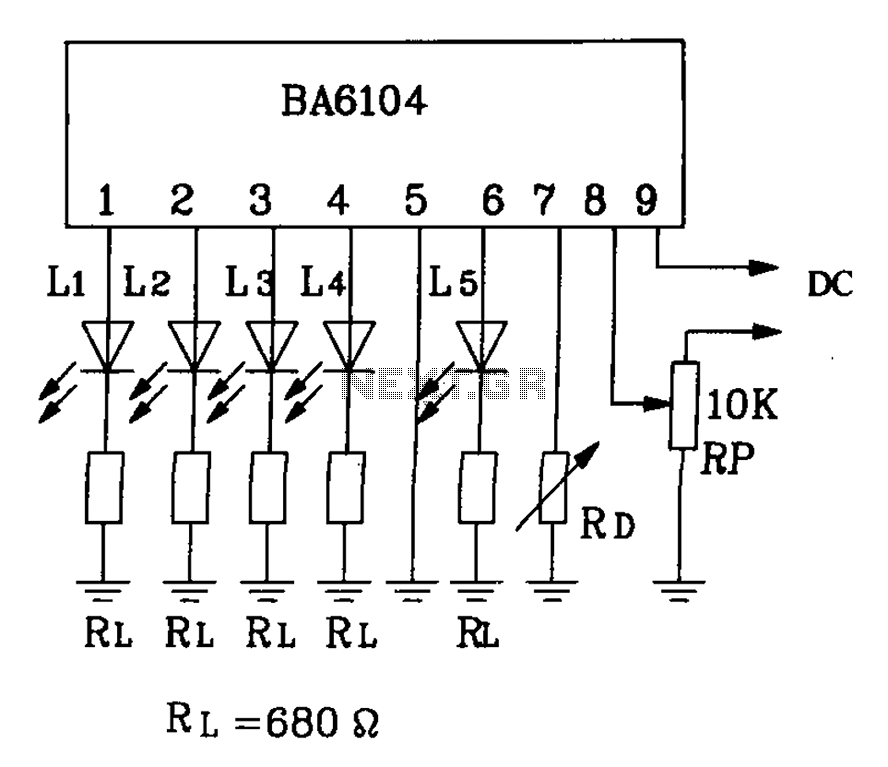
CD4093 Water Level Sensor (Detector)
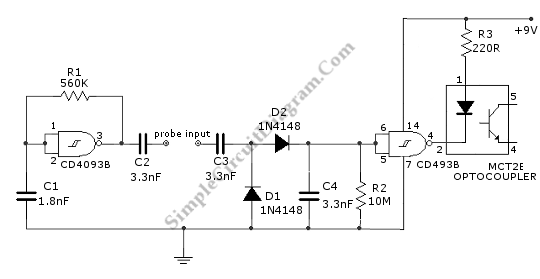
This water level sensor circuit utilizes a standard NAND logic gate to generate oscillation and detect water levels. The oscillation functionality is integrated within the circuit.
The water level sensor circuit employs a NAND logic gate to create a square wave oscillation, which is essential for detecting varying water levels. The circuit typically consists of a few key components: a NAND gate, resistors, capacitors, and conductive probes that serve as the sensing elements.
When water is present, it acts as a conductive medium, allowing current to flow through the probes. The resistance between the probes changes depending on whether they are submerged in water or exposed to air. This change in resistance alters the oscillation frequency generated by the NAND gate.
The output from the NAND gate can be connected to additional components such as an LED indicator or a relay. The LED will illuminate when the water level reaches a certain threshold, providing a visual indication of the water level. In contrast, the relay can be used to control a pump or valve, enabling automatic filling or draining of a tank based on the detected water level.
To ensure reliable operation, the circuit may incorporate a filtering capacitor to smooth out any noise in the signal and provide stable oscillation. Additionally, the choice of resistor values can be adjusted to calibrate the sensitivity of the water level detection, allowing for customization based on specific application requirements.
Overall, this water level sensor circuit is a simple yet effective solution for monitoring water levels in various applications, including aquariums, water tanks, and industrial processes.This water level sensor (detector) circuit uses a standard NAND logic gate to produce oscillation and to detect the water level. Oscillation is included inside.. 🔗 External reference
The water level sensor circuit employs a NAND logic gate to create a square wave oscillation, which is essential for detecting varying water levels. The circuit typically consists of a few key components: a NAND gate, resistors, capacitors, and conductive probes that serve as the sensing elements.
When water is present, it acts as a conductive medium, allowing current to flow through the probes. The resistance between the probes changes depending on whether they are submerged in water or exposed to air. This change in resistance alters the oscillation frequency generated by the NAND gate.
The output from the NAND gate can be connected to additional components such as an LED indicator or a relay. The LED will illuminate when the water level reaches a certain threshold, providing a visual indication of the water level. In contrast, the relay can be used to control a pump or valve, enabling automatic filling or draining of a tank based on the detected water level.
To ensure reliable operation, the circuit may incorporate a filtering capacitor to smooth out any noise in the signal and provide stable oscillation. Additionally, the choice of resistor values can be adjusted to calibrate the sensitivity of the water level detection, allowing for customization based on specific application requirements.
Overall, this water level sensor circuit is a simple yet effective solution for monitoring water levels in various applications, including aquariums, water tanks, and industrial processes.This water level sensor (detector) circuit uses a standard NAND logic gate to produce oscillation and to detect the water level. Oscillation is included inside.. 🔗 External reference
Warning: include(partials/cookie-banner.php): Failed to open stream: Permission denied in /var/www/html/nextgr/view-circuit.php on line 713
Warning: include(): Failed opening 'partials/cookie-banner.php' for inclusion (include_path='.:/usr/share/php') in /var/www/html/nextgr/view-circuit.php on line 713
